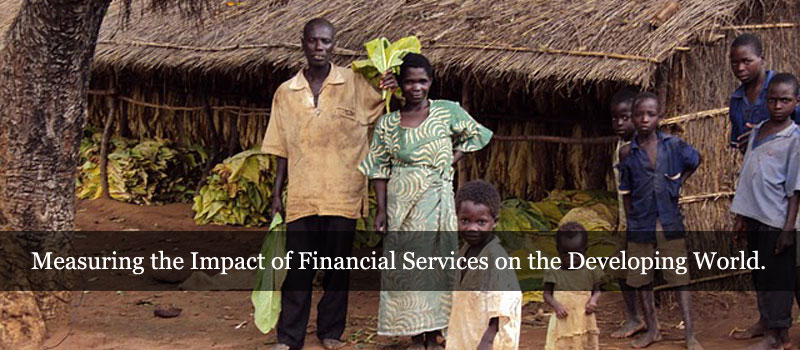Enabling Environments For Microfinance: A Concept Note
Grants are sometimes called "seed money." In farming, seeds flourish or fail depending on whether they are planted in fertile soil. Or, more broadly, we might ask if the environment is conducive, having appropriate amounts of moisture, sunlight, nutrients, and the like. In our present context, grants supply "seed" to areas where it is likely to flourish. But they do not supply a conducive environment.
This analogy, with all its imprecision, points out that microfinance must grow in a context not of its own making. The context may include imponderables such as war, famine, or natural disaster as well as trends and cycles that vary in intensity—as do the weather and the state of the economy. And microfinance institutions (MFIs) must also deal with risks arising in their operations, such as possible default, competition, shifts in demand, and variable liquidity.
Now, there are two basic approaches to addressing the complex of risks and uncertainties in microfinance:
- First, programs and products can be designed in ways that avoid or alleviate potential difficulties. The Bill and Melinda Gates Foundation provides microfinance innovation grants that support such designs.
- What studies exist that evaluate the impact of savings products and services on the lives of the poor?
- How robust are these studies (critical review)?
- Second, reforms might be adopted at the level of national or local government, or alternatively at the level of the banking or microfinance sector, to create mechanisms that reduce costs, risks, and uncertainties.
The microfinance innovations are within the control of the grantee organizations. They are the primary subject of the empirical studies being carried out by the IRIS Center and Microfinance Opportunities under the rubric, "Assessing the Impact of Innovation Grants in Financial Services." Those innovations are not, however, the main focus of this note. Rather, we focus on the second group of elements listed, those usually described as the enabling environment (EE).
Describing the enabling environment this way suggests why we should seek to understand it. In our farming analogy, the quality of the seed alone cannot explain a flourishing or failed crop, and so one must look to soil, environment, and techniques used by the farmer. Disentangling innovation from context is critical for assessing the impact of the grants. As well, both innovations and the conditions in which they are deployed vary. Thus, examining the latter conditions makes it possible to judge which design is likely to work in which context, and thus to calibrate expectations about the impact of similar innovations in future settings. Incorporating EE analysis into this assessment project should provide yet another benefit. It affords a basis for determining whether, in some contexts, supporting enabling environment reforms would have a higher payoff in terms of improved financial access than supporting retail microfinance innovations.
Just as critical, we must carefully delimit what we study when we consider the EE. It is neither the environment as a whole nor the innovation itself, but the instruments such as policies and organizations that the public or the financial sector establishes to create a stable basis for action. (In terms of our farming metaphor, the EE constituted by a society corresponds to the techniques used by the farmer.) The discussion below will flesh out the meaning and importance of the enabling environment, the components of this environment, and our suggested approach toward analyzing it in areas where innovation grants are being implemented.




